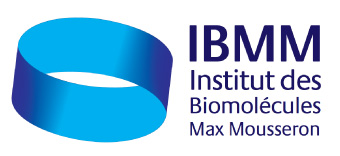Nanocomposite and hybrid hydrogels – synthesis, characterization and applications
Séminaire Chimie ED459
Dr. Bruno F.
Le Jeudi 07 Février 2019 à 14h
ENSCM, Amphithéâtre Godechot (campus Balard, 240 av. Émile-Jeanbrau)
Date de début : 2019-02-07 14:00:00
Date de fin : 2019-02-07 15:30:00
Lieu : ENSCM amphi Godechot (campus Balard, 240 av E. Jeanbrau)
Intervenant : Dr. Bruno F.
Department of Polymer, Faculty of Chemical Science, University of Concepción, Chile
Hydrogels are liquid-solid systems composed of a solid matrix that swells in water. The hydrogels bear two main characteristics, (i) they are soft and elastic, and (ii) hydrogels are open systems that can exchange substances between the inner and outer phases, leading to a wide field of applications. The incorporation of inorganic compounds into the polymer matrix has exhibited a tremendous development in the last decades, being the addition of nanoparticles to those that have presented greater interest in order to improve physical-mechanical properties and/or add new features to it. The versatility of these materials comes from the variety of polymer (natural, synthetic, copolymers, etc), and nanostructures commercially available or synthesizable such as those based ceramics and metal/metal oxide nanoparticles. On the other hand, organic-inorganic polymeric hybrid materials have developed significantly in recent decades and consist in a composite material where the constituents are mixed at a molecular level. The concept of hybrid materials should be differentiated from nanocomposites since the former ideally corresponds to a homogeneous system, while the nanocomposite displays discrete domains at a nanoscale (1–100 nm), leading to a heterogeneous system.
The first part of the talk will present results regarding the synthesis and characterization of hybrid materials based on a polyelectrolyte copolymer and hydrous zirconium oxide as inorganic moiety with an application in the environmental field. These materials are synthesized in a two-step process that involves the synthesis of the polymer and then a sol-gel reaction to form the inorganic phase.
The second part will cover the recent results regarding the incorporation of TiO2 oxide nanoparticles and their surface functionalization in order to modify the mechanical and rheological properties of physical hydrogels and allow its visualization by confocal microscopy.
References
1. J. Pérez, et al., Chemical Engineering Journal 2016, 287, 744–754.
2. L. Toledo, et al, Colloids and Surfaces A: Physicochemical and Engineering Aspects 2018, 546, 91–98.
3. L. Belmar, et al., Materials Today Communications 2018, 16, 285–292.
4. L. Toledo, et al., Materials Science and Engineering C 2018, 92, 769–778.
Acknowledgements : support by Fondecyt Regular 1171082.
Contact local ICGM : Prof. Bruno
